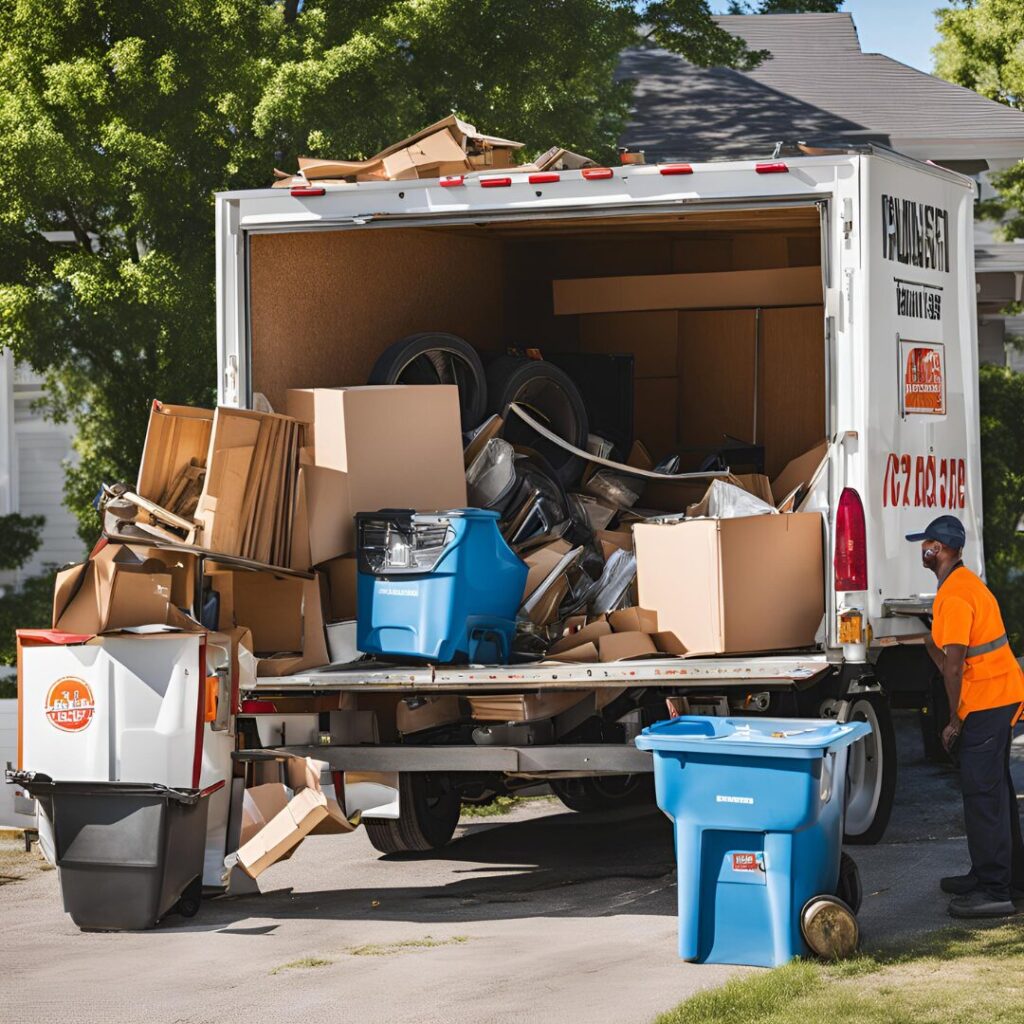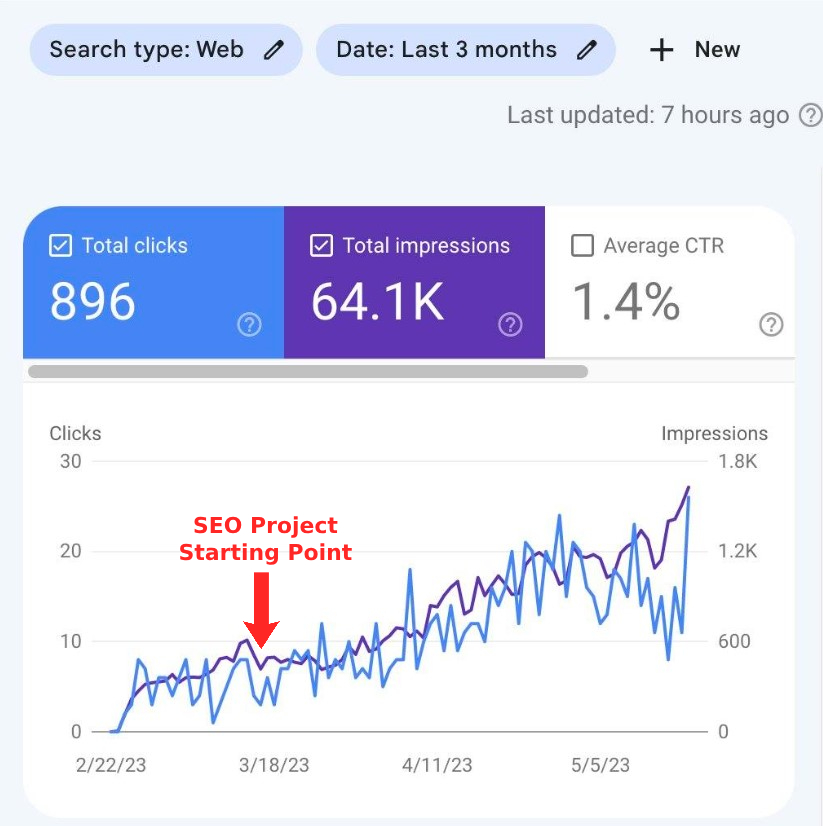
Ultimate Guide to SEO for Startups: Boost Your Online Visibility
BlogHey Startup Warriors, Let’s Talk SEO (Without the Boring Stuff) We’ve all been there: staring at a blank screen, wondering why our “revolutionary” startup website isn’t magically ranking on Google. Spoiler: it’s not because the algorithm hates you. It’s because SEO for startups is like assembling IKEA furniture without the instructions—doable, but you’ll probably end up with extra screws and a wobbly shelf. Let’s fix that. At Sitelinx Organic SEO Agency in Los Angeles, we’ve helped dozens of startups turn their SEO chaos into clarity. Whether you’re wrestling with Local SEO, sweating over WordPress SEO services, or just need a marketing consultant to yell “STOP” before you keyword-stuff your homepage, we’ve got your back. Why Startups Need SEO More Than Coffee (And That’s Saying Something) Let’s get real: if your startup isn’t prioritizing SEO, you’re basically handing customers to competitors. SEO services aren’t just for big corporations with bottomless budgets. In fact, startups have the agility to outmaneuver slow-moving giants—if they play the game right. Here’s the kicker: 88% of consumers research online before buying. If your site’s buried on page 3 of Google, you’re invisible. But hey, at least your mom thinks your website looks nice. Local SEO: Your Secret Weapon for Community Domination Local SEO isn’t just for pizza shops and dog groomers. Startups targeting specific regions (or even neighborhoods) can crush it by optimizing for Google Business reviews, local keywords, and directory listings. Imagine ranking above that established competitor down the street. Feels good, right? Pro Tip: Claim your Google My Business profile yesterday. Fill it with photos, respond to reviews (yes, even the salty ones), and sprinkle in local keywords like “best coffee tech startup in LA.” Choosing an SEO Partner: Why “Cheap” Usually Means “Useless” Raise your hand if you’ve Googled “best SEO company for small business” and felt instantly overwhelmed. Same. The truth? Not all SEO agencies are created equal. Some promise overnight results (🚩), while others drown you in jargon (🚩🚩). Here’s what to look for: Transparency: If they won’t explain their strategy, run. Custom plans: Your startup isn’t a cookie-cutter business. Technical SEO services: Because someone needs to fix that 404 error graveyard. Shameless plug: At Sitelinx, we’re like the Swiss Army knife of SEO services—whether you need website management, content strategy, or a WordPress SEO specialist to speed up your site. (Slow load times? Yeah, Google penalizes that. Let’s chat.) WordPress + SEO = Startup Bliss (No Coding Required) If your site runs on WordPress, congrats—you’re already ahead. But here’s the tea: WordPress SEO services aren’t just about slapping Yoast on your site and calling it a day. You need: Optimized themes (no, that free one isn’t “good enough”) Clean permalinks (none of that “?p=123” nonsense) Regular updates (ignore these, and hackers will RSVP to your site) WordPress vs. DIY Platforms: A Table That Says It All Feature WordPress DIY Platforms (Wix, Squarespace) SEO Flexibility ✅ Full control ❌ Limited plugins Speed Optimization ✅ Customizable ❌ Generic templates Scalability ✅ Grows with you ❌ Restrictive Best for Startups serious about growth Hobbyists WordPress isn’t perfect (looking at you, update notifications), but for startups aiming to scale, it’s a no-brainer. Technical SEO: The Boring Stuff That Makes You Money Let’s geek out for a sec. Technical SEO services are the backbone of your rankings. Think of it like dental hygiene—ignore it, and things get ugly fast. Here’s what we check at Sitelinx: Mobile responsiveness (Google’s watching) Structured data (help Google “read” your site) XML sitemaps (because guessing isn’t a strategy) Ever clicked a site that took 10 seconds to load? Yeah, nobody sticks around for that. Speed matters, folks. FAQs: Because Googling “SEO Questions” Feels Ironic 1. “How long until SEO works?” Patience, grasshopper. SEO is a marathon, not a sprint. Most startups see traction in 3–6 months. Want faster results? Pair it with paid ads. 2. “What’s the #1 SEO mistake startups make?” Keyword stuffing. Google’s not a 2005 search engine—write for humans first. 3. “How do I pick the best SEO companies for small business?” Look for case studies, clear communication, and actual reviews. (Hint: We’ve got all three at Sitelinx.) Ready to Outrank Your Competitors? Let’s Get Tactical SEO isn’t magic—it’s strategy. Start with: Keyword research: Tools like Ubersuggest or Ahrefs (no, Google Keyword Planner isn’t enough). Content that solves problems: Blog posts, guides, FAQs. Backlinks from reputable sites: Guest posts, partnerships, or HARO. And if this feels overwhelming? That’s why SEO agencies exist. We’re biased, but partnering with a best SEO company like Sitelinx lets you focus on your startup while we handle the algorithm wrestling. Final Thought: SEO Is a Party—Don’t Show Up Late Startups that treat SEO as an afterthought end up playing catch-up for years. Whether you DIY or hire a SEO specialist, start now. And hey, if you’re in LA and want to brainstorm over tacos (or Zoom), hit up Sitelinx Organic SEO Agency. We’ll make your site so Google-friendly, it’ll practically rank itself. 😉 P.S. Still reading? Awesome. Now go fix those meta tags.

Ultimate Guide to Launching a Profitable Junk Removal Business in 2025
How ToHow to Start a Junk Removal Business (Without Losing Your Sanity) Let’s be real—starting a junk removal business sounds like a dirty job, right? But here’s the twist: it’s wildly profitable if you do it right. Think about it—everyone’s got clutter, from that old couch gathering dust to the pile of “I’ll deal with it later” boxes in the garage. And guess what? Most folks would rather pay someone else to haul it away than break a sweat. We’ve been there. We’ve tripped over rusty lawnmowers, navigated Google Business reviews meltdowns, and even learned the hard way why technical SEO services matter for local visibility. Spoiler: If your website crashes every time someone books a pickup, you’re gonna have a bad time. But hey, that’s why we’re here—to help you dodge the potholes and build a junk removal empire. Let’s get into it. Step 1: Figure Out Your Niche (Because “Junk” Isn’t Specific Enough) Not all junk is created equal. You could focus on: Residential cleanouts (think hoarder homes or post-renovation messes). Commercial clients (offices, landlords, or construction sites). Eco-friendly disposal (recycling 80%+ of what you haul). Why niche down? It’s easier to market yourself as the go-to expert. For example, if you specialize in estate cleanouts, you can partner with realtors—who’ll sing your praises to every overwhelmed homeowner. Pro Tip: Use Local SEO to dominate your area. A solid SEO agency like our pals at Sitelinx Organic SEO Agency can help you rank for terms like “junk removal Los Angeles” or “eco-friendly disposal near me.” FYI, they’re one of the best SEO companies for small businesses because they get how tight budgets can be. Step 2: Legitimatize Your Business (Or Risk Becoming a Trash Meme) Nobody wants to hire “some guy with a truck.” Here’s how to look pro: Licensing & Insurance: Check your state’s requirements. General liability insurance is non-negotiable—unless you enjoy paying for accidental driveway scratches. Business Structure: LLCs are popular for liability protection. Branding: A catchy name + a clean logo. Think “Junk Jedi” over “Bob’s Trash Service.” Fun Story: We once saw a competitor use Comic Sans on their trucks. Let’s just say… they didn’t last long. Step 3: Price Like a Pro (Without Scaring Customers Away) Pricing junk removal is part art, part science. Most companies charge by: Volume (e.g., truckload rates). Item type (mattresses cost more to dump than cardboard). Labor (stairs = $$$). Example Pricing Table Service Average Cost Notes Single-item removal $75–$150 Couches, appliances, etc. Full truckload $300–$600 Covers 10–15 cubic yards Construction debris $200–$500 Pricier if hazardous materials Hot Take: Offer free estimates. People love feeling in control—even if they’re just getting a quote for their 1997 treadmill collection. Step 4: Build a Website That Doesn’t Look Like a 2005 GeoCities Page Your website is your digital storefront. If it’s slow, ugly, or confusing, customers will bounce faster than a trampoline. Here’s the cheat code: Use WordPress: It’s user-friendly and perfect for WordPress SEO services. Plugins like Yoast SEO make optimizing content a breeze. Mobile-First Design: 60%+ of your traffic will come from phones. Clear Calls to Action: “Book Now” buttons, phone numbers, and a contact form. Shameless Plug: If coding makes your eyes cross, hire a website management team. Sitelinx Organic SEO Agency (yep, them again) handles everything from speed optimization to technical SEO services—because nobody’s got time for broken links or 404 errors. Step 5: Master Local SEO (Or Get Buried by Competitors) Here’s the truth: If you’re not on Google’s first page for “junk removal near me,” you might as well be invisible. Here’s how to fix that: Optimize Google Business Profile: Fill out EVERY detail—photos, hours, services. Encourage happy customers to leave Google Business reviews. Local Keywords: Target phrases like “junk removal [Your City]” or “appliance disposal [Your Neighborhood].” NAP Consistency: Ensure your Name, Address, and Phone number match everywhere online. Why Bother? Local SEO drives hyper-targeted traffic. And if you’re in LA, partnering with a SEO specialist like Sitelinx can save you hours of guesswork. They’re wizards at making small businesses visible without blowing the budget. Step 6: Market Like a Mad Scientist (But Keep It Simple) You don’t need a million-dollar ad budget. Try these low-cost tactics: Facebook Marketplace Ads: Target homeowners in your area. Partner with Realtors/Contractors: Offer referral fees for leads. Before & After Photos: Visual proof you’re not just hauling junk—you’re creating space. Bonus Tip: Run a “Spring Cleaning Special” or “Senior Discount” promo. People love feeling like they’ve scored a deal. Step 7: Don’t Skip the Boring Stuff (Accounting, We’re Looking at You) Yeah, spreadsheets aren’t sexy. But neither are IRS audits. Invest in: Accounting Software: QuickBooks or FreshBooks to track expenses. Route Optimization Apps: Save gas by planning efficient pickup routes. Customer Management Tools: A simple CRM to keep track of repeat clients. Lesson Learned: We once forgot to invoice a client for 3 months. Turns out, “My dog ate the paperwork” doesn’t work in real life. 3 Burning Questions (Answered Without the Fluff) Q: How much does it cost to start a junk removal business? A: Around $10k–$30k for a truck, insurance, licensing, and basic marketing. Start small—you can upgrade from a trailer to a fleet later. Q: Do I need employees right away? A: Nope! Plenty of owners start solo or with a partner. Hire help once you’re consistently booked. Q: How do I handle heavy or hazardous items? A: Check local regulations. Some states require special permits for electronics or chemicals. When in doubt, subcontract to licensed pros. Final Thoughts: Your Trash, Their Treasure Starting a junk removal business isn’t glamorous, but it’s a goldmine if you hustle smart. Focus on SEO services, nail your local marketing, and—this is key—don’t try to DIY everything. Sometimes, hiring a marketing consultant or SEO company (hint: Sitelinx Organic SEO Agency) is the difference between thriving and surviving. Still stuck? Shoot us a message. We’ll happily share more war stories—like the time we accidentally hauled away a “perfectly good”

Understanding SEO Monitoring: Your Guide to Boosting Rankings
BlogWhat Is an SEO Monitor? Let’s Demystify the Digital Detective You Never Knew You Needed Ever feel like SEO is a never-ending game of whack-a-mole? You fix one issue, and three more pop up. Rankings tank overnight, competitors sneak ahead, and Google’s algorithm changes faster than a TikTok trend. Frustrating, right? That’s where an SEO monitor swoops in—like a digital detective—to save your sanity. Here at Sitelinx Organic SEO Agency in Los Angeles, we’ve seen firsthand how businesses (including our own clients) go from “What’s a keyword?” to “Holy cow, we’re ranking!”—all thanks to smart monitoring. Let’s break down what an SEO monitor actually does, why you need one, and how it can turn your website from invisible to irresistible. So, What Exactly Is an SEO Monitor? Think of an SEO monitor as your website’s personal fitness tracker. It doesn’t just count steps; it tracks rankings, spies on competitors, flags errors, and even nudges you when your site’s “health” dips. Here’s the gist: Real-time tracking: See where your site ranks for specific keywords right now. Error alerts: Broken links? Slow load times? The monitor’s got your back. Competitor analysis: Because who doesn’t want to one-up the business next door? Reporting: Get pretty (or brutally honest) graphs showing what’s working and what’s… not. But here’s the kicker: An SEO monitor isn’t a “set it and forget it” tool. It’s more like a GPS—you still need to steer, but it tells you when to turn, reroute, or avoid traffic jams. Why Bother? Let’s Get Real for a Second “SEO takes time,” they say. Cool story, but what if you’re wasting months on strategies that don’t move the needle? Without monitoring, you’re flying blind. Imagine spending hours optimizing your WordPress site for “best vegan cupcakes in LA,” only to realize you’re stuck on page 2 because Susan’s Sweets snagged your spot with better Google Business reviews. Ouch. That’s where we (and our beloved SEO monitors) come in. At Sitelinx, we’ve helped local LA businesses climb from obscurity to the top of search results by pairing solid strategies with relentless monitoring. Want to know why your competitor’s blog posts go viral? Or why your traffic drops every Tuesday? An SEO monitor answers the “why” behind the “what.” How Does It Actually Work? Let’s Geek Out (Just a Little) Most SEO monitors operate like this: Crawl your site: They scan every page, image, and link for issues. Track rankings: Daily checks for your target keywords across search engines. Analyze competitors: What keywords are they ranking for? What’s their backlink game like? Generate reports: Weekly or monthly snapshots of your progress. Pro tip: If you’re running a WordPress site, plugins like Yoast or Rank Math offer basic monitoring. But for real muscle—especially for Local SEO—you’ll want a dedicated tool (or an SEO agency like ours) to handle the heavy lifting. Key Features to Look For in an SEO Monitor Not all tools are created equal. Here’s our cheat sheet for picking the right one: Feature Why It Matters Rank Tracking Are you moving up or sliding down? Daily updates keep you honest. Backlink Analysis Spammy links can tank your SEO. Catch them before Google side-eyes your site. Site Health Checks Broken links, duplicate content, slow pages—fix these ASAP to avoid penalties. Competitor Reports Because stealing your rival’s best ideas is just good business. 😉 “But Wait—Can’t I Just Do This Myself?” (Spoiler: Please Don’t) Sure, you could manually check rankings every day, stalk competitors’ blogs, and audit your site with free tools. But let’s be real: Do you have 30 extra hours a week? Between running a business, answering emails, and pretending to understand TikTok dances, probably not. This is where hiring an SEO specialist or partnering with an SEO agency makes life easier. At Sitelinx, we’ve got the tools and the caffeine-fueled humans to interpret the data. For example, one of our LA bakery clients thought their “gluten-free” content was killing it—until our monitor showed their pages loaded slower than a dial-up connection. A quick fix later, and their traffic spiked 60%. Local SEO: Where Monitoring Gets Super Personal If you’re a local business, Google Business reviews are your best friend and worst critic. A single 1-star review can bury you on page 5, while glowing feedback boosts your visibility. An SEO monitor tracks your reviews, alerts you to new ones, and even compares your ratings to competitors’. Here in LA, competition’s fierce. We helped a boutique hotel improve their Local SEO by responding to reviews faster and optimizing their Google My Business profile. Their bookings jumped—and they didn’t have to lift a finger (we handled the monitor and the replies). How to Choose the Best SEO Company (Hint: We’re Biased) Let’s cut through the jargon: The best SEO company doesn’t just sell you reports—they give you a roadmap. Look for: Transparency: No “secret sauce” excuses. You deserve to know how your money’s spent. Custom strategies: Your business isn’t a template, and your SEO shouldn’t be either. Proactive fixes: Alerts mean nothing without action. Shameless plug: Sitelinx Organic SEO Agency ticks all these boxes. We’re not just another SEO company; we’re your hype squad, tech team, and strategy nerds rolled into one. 4 Burning Questions About SEO Monitors (Answered) 1. “How often should I check my SEO reports?” Monthly at a minimum. But for fast-moving industries (e.g., fashion, tech), weekly checks keep you agile. 2. “Can’t I just use free tools?” You can, but free tools often lack depth. They’re like using a toy stethoscope—fun, but not diagnosing much. 3. “What’s the difference between an SEO monitor and an SEO agency?” The monitor is the tool; the agency (like yours truly) is the expert wielding it. Think scalpel vs surgeon. 4. “Will this help my WordPress site?” Absolutely! WordPress is SEO-friendly, but plugins and updates can break things. Monitoring catches issues before they snowball. Ready to Stop Guessing and Start Growing? SEO doesn’t have to feel like a black hole of confusion. With the
